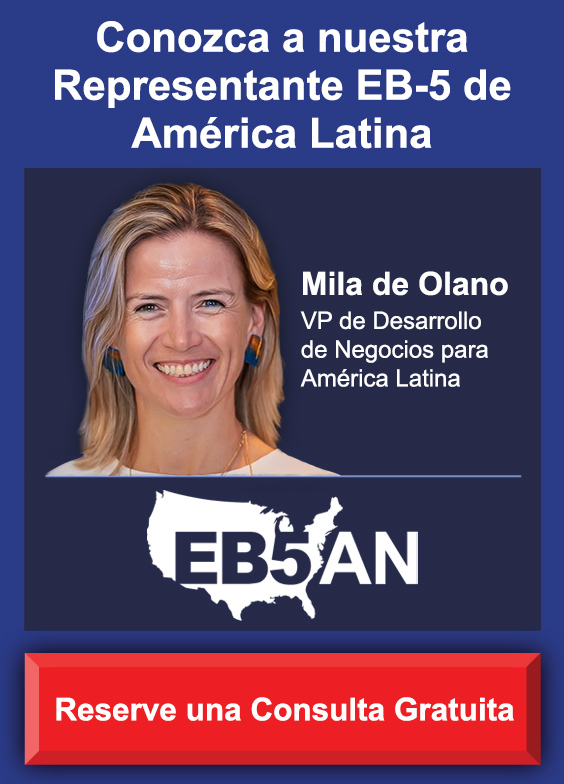Many foreign nationals from all over the world hope to begin a future in the United States. Whether education, employment, or entrepreneurial opportunities, the United States of America offers immigrants and their families the possibility of an amazing future. There are many different ways to immigrate to the United States, so it is important for individuals to know which U.S. startup visas are available and which visas best fit their needs.
The following visas are available to eligible immigrants:
- EB-Visas
- E-2 Treaty Investor Visa
- H-1B Visa
- L-1 Visa
- O-Visas
Immigrant Visas
Immigrant visas are permanent resident visas. They grant the holder permanent resident status, which allows them to reside in the U.S. indefinitely. Immigrants with permanent resident visas can live, work, and study freely in the United States. These visas are best for individuals that seek to permanently relocate to the U.S. rather than seek temporary employment or education. Below are the some of the best immigrant visas available to those planning to relocate to the U.S.
EB-1 Visa: Employment-Based Immigration, First Preference
The “EB” in EB visas stands for “employment based.” These visas are meant for foreign nationals planning to work permanently in the United States. There are five different EB visas, ranked according to preference. All EB visas require the applicant to have specific or highly advanced skills.
The first EB visa, EB-1, is available to three types of foreign nationals:
- Those extremely skilled in the sciences, arts, education, business, or athletics, recognized by national or international acclaim (job offer not required)
- Professors or researchers who are pursuing tenure
- Those in executive and management roles of multinational companies
Requirements vary depending on the type of EB-1 visa being applied for.
EB-2 Visa: Employment-Based Immigration, Second Preference
The EB-2 visa is similar to the EB-1 visa but requires applicants to have a higher skillset. Applicants are required to provide evidence that proves their advanced skill set or degree. This visa is available to the following individuals:
- Applicants who already have a job offer that requires an advanced degree or a high level of experience that equates to an advanced degree
- Applicants with exceptionally high skills in the sciences, arts, or business
- Applicants who request the labor certification (PERM) to be waived because their working in the United States would be beneficial to the country
The required evidence differs for each applicant depending on their job, skill, and situation. Applicants may be required to present a copy of their degree or professional licenses to prove their qualifications. EB-2 applicants may also apply for visas for their spouse and unmarried children younger than 21.
EB-5 Visa: Employment-Based Immigration, Fifth Preference
The last EB visa option is the EB-5 visa. The EB-5 Immigrant Investor Program is an opportunity for foreign investors to obtain a U.S. green card by investing in a qualifying EB-5 project. EB-5 investors and their immediate family members can obtain permanent resident status in the U.S. by fulfilling the following requirements:
- Invest a minimum of $1.8 million or $900,000, depending on whether the EB-5 project is in a targeted employment area (TEA).
- Provide evidence that all EB-5 capital came from lawful sources.
- Keep their investment capital at risk throughout the investment period.
- Prove that their investment created at least 10 new, full-time jobs for U.S. workers.
EB-5 investors can choose to invest directly in an EB-5 project or invest through a regional center. The EB-5 program can be somewhat complicated, and investors often experience delays in the process. However, the EB-5 program is still considered one of the quickest ways to immigrate to the United States.
E-2 Visa: Treaty Investors
Similar to the EB-5 visa, the E-2 visa is also available to foreign investors that invest in a U.S. business. However, the E-2 visa is only available to applicants from certain countries that maintain specific treaties with the United States. The EB-5 visa is available to investors from any country.
Unlike the EB-5 visa, the E-2 visa does not specify a minimum investment amount, but the investment does have to qualify as “substantial” according to the Foreign Affairs Manual (FAM) and U.S. statue and regulations. Investors that choose the E-2 route are also required to own at least 50% of the business or operational control. EB-5 regional investors do not have to engage in managerial or operational business duties.
Non-Immigrant Visas
While immigrant visas allow people to reside permanently in the United States, non-immigrant visas allow people to enter the U.S. temporarily for specific reasons, including tourism, education, and employment. These visas may be more desirable for individuals who need to reside in the U.S for a given amount of time but do not plan to permanently relocate. Below are some available options of non-immigrant visas.
H-1B Visa: Specialty Occupations
The H-1B visa is a non-immigrant visa for individuals that have received a job offer in the U.S. in a “specialty occupation.” The applicant must be sponsored by the employer to qualify for an H-1B visa. Additionally, the employer must prove that the applicant is qualified for the position and that they are unable to find a U.S. worker to fill the position. This visa process can be lengthy and possibly delay when the applicant may begin working.
L-1 Visa: Intracompany Transferees
L-1 visas are available to foreign employees of multinational companies that are transferring to the United States from foreign branches, affiliates, or subsidiaries. There are two types of L-1 visas.
- L-1A Visa: Available for employees in managerial and executive roles
- L-1B Visa: Available to employees with specialized knowledge who are not necessarily managers
The O-1 Visa: Individuals with Extraordinary Ability or Achievement
The O-1 visa targets individuals with exceptional skill or achievement recognized by national or international acclaim. It is similar to EB-1 and EB-2 visas but instead is a non-immigrant visa that allows the applicant to reside in the U.S. temporarily while they work in their field of expertise. Applicants must work in education, business, athletics, the sciences, the arts, or motion picture.
There are also O-2 and O-3 visas available for those close to the O-1 applicant. The O-2 visa is available to those that are “essential” to the O-1 applicant’s work. This visa allows them to temporarily relocate to the U.S. with the O-1 applicant. The O-3 visa is available for the spouse and children of the O-1 applicant.
Which Visa is Best for You?
There are many different ways for foreign nationals to immigrate to the United States. Each visa has pros and cons depending on your future plans and goals. Those planning to immigrate to the U.S. should consider their needs, as well as which visas are available for their specific situation. Discussing your situation and goals with an immigration attorney can ensure you are aware of all your options and help you choose the easiest path for you.


